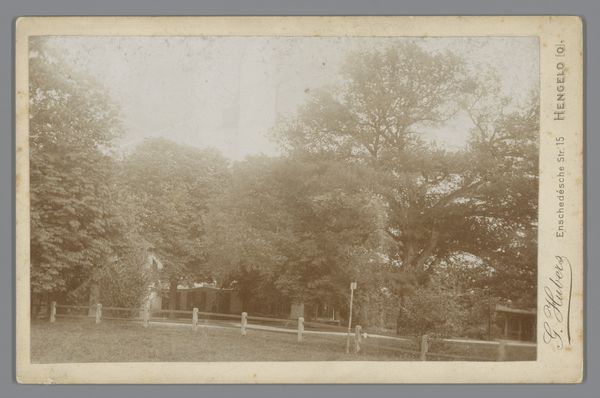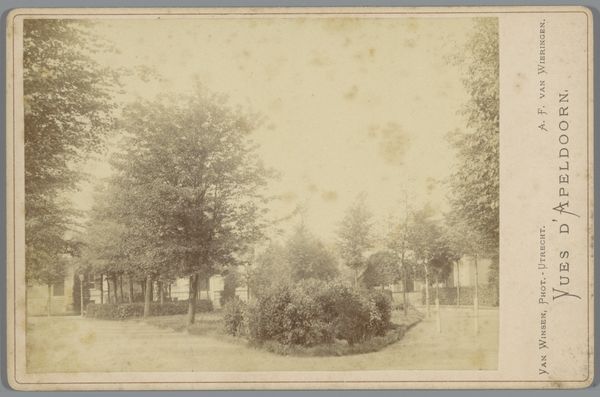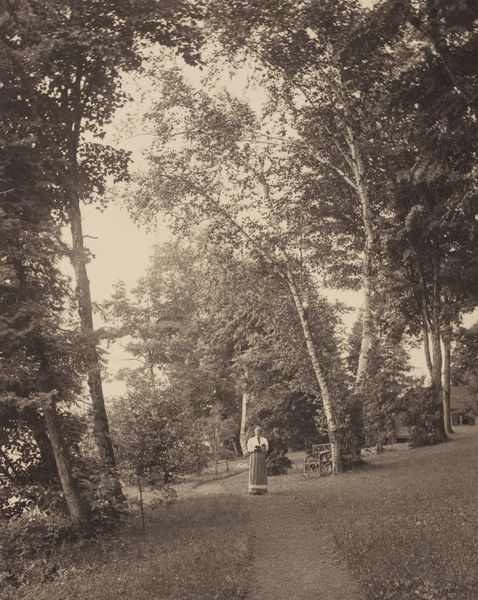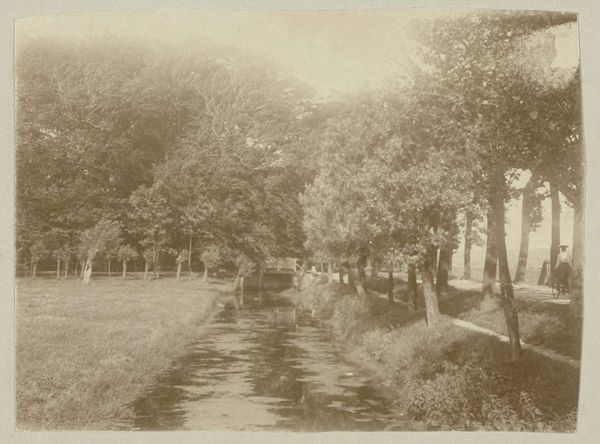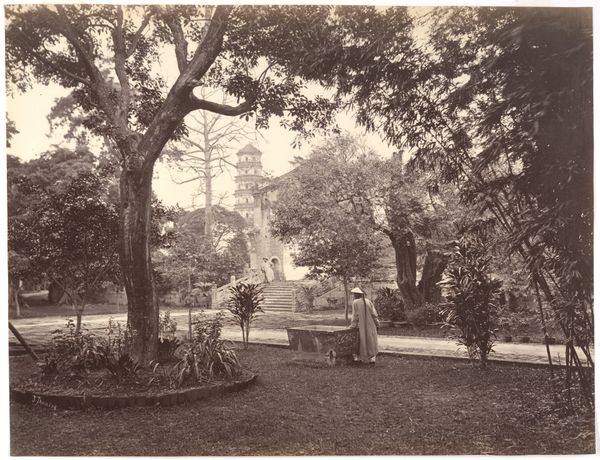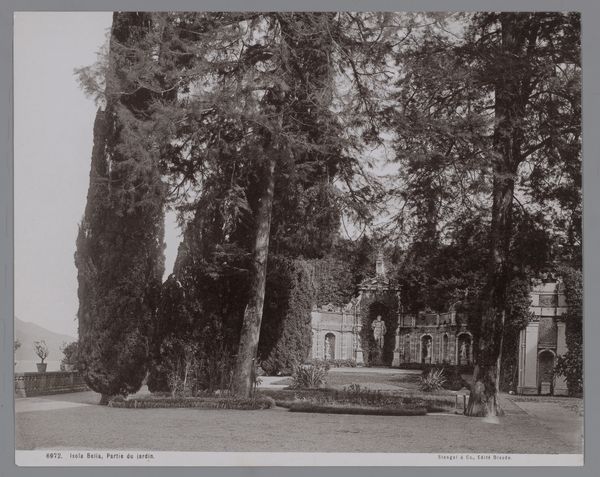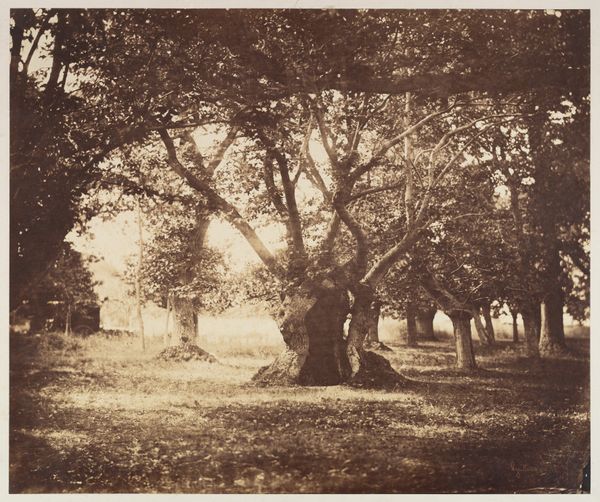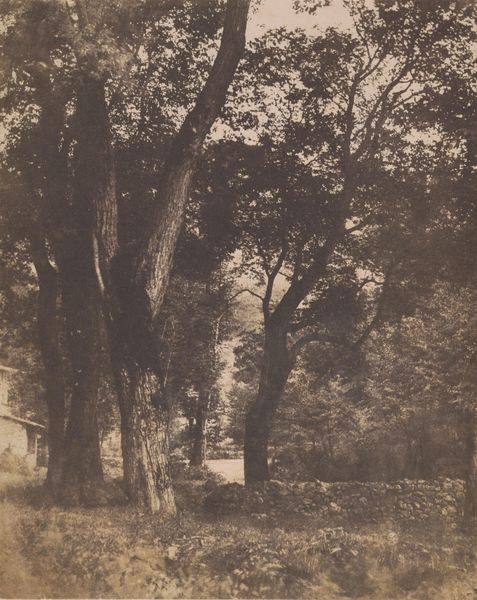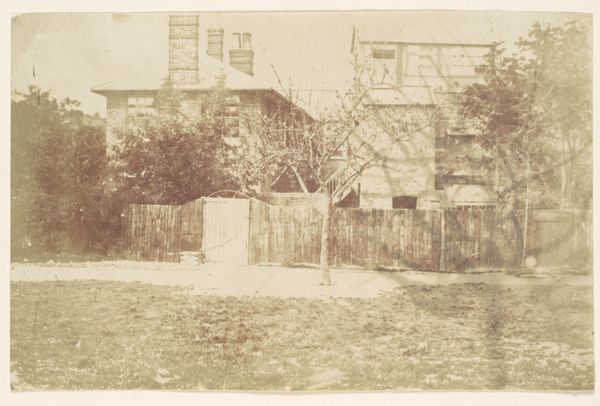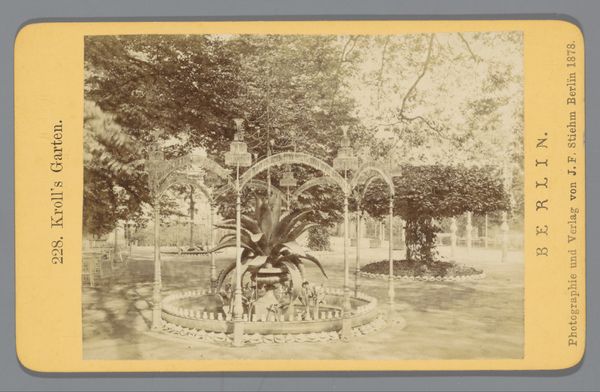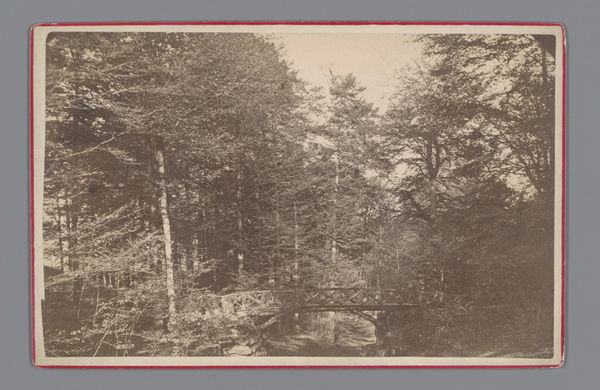
photography, albumen-print
#
landscape
#
photography
#
orientalism
#
albumen-print
Dimensions: height 154 mm, width 225 mm
Copyright: Rijks Museum: Open Domain
Curator: Here we have an albumen print by Antoine Sevruguin, entitled "Landschap met enkele hutjes en bomen ('La route de Rescht')," dating roughly from 1880 to 1910. Editor: It feels dreamlike, almost fading. The light behind the trees is overwhelming, washing out detail, and the composition feels divided. Curator: Sevruguin's work often captured the visual culture of Persia for a European audience. The albumen print process gives a warm sepia tone that evokes a sense of the past. The way the landscape is framed may relate to ideas around exoticism that were common at that time. Editor: Exactly. Structurally, the strong horizontal of the path intersects with the verticality of the trees creating a stage-like effect. It flattens the image, lending a sense of constructedness. The artist is less concerned with replicating visual experience than framing a kind of symbolic encounter. Curator: The houses themselves can also be interpreted as cultural symbols within this representation. Note their proximity, huddled near each other and integrated into the surrounding foliage; these are indicators of a relationship between man and the environment and carry social meaning. Editor: But is that integration natural or a constructed fantasy? Look at the uniformity of the trees, how their trunks are evenly spaced—there is an artificial order at play here. Even the hazy quality could be a way to distance the scene, softening the reality. Curator: Perhaps it is about presenting an idealized vision, reflecting European desires for an "authentic" yet tamed landscape. Editor: Yes, the light also obscures potentially disruptive details; it’s like a scrim over harsh realities. The romantic sepia and picturesque arrangement ultimately mask a deeper cultural narrative. Curator: Examining such images urges us to consider how photography contributed to shaping perceptions and cultural narratives around landscape, place, and identity during the late 19th century. Editor: Ultimately, it invites us to critically examine how the visual is constructed. This image, like many others from the period, shows that seeing isn't simply believing but carefully framing.
Comments
No comments
Be the first to comment and join the conversation on the ultimate creative platform.
